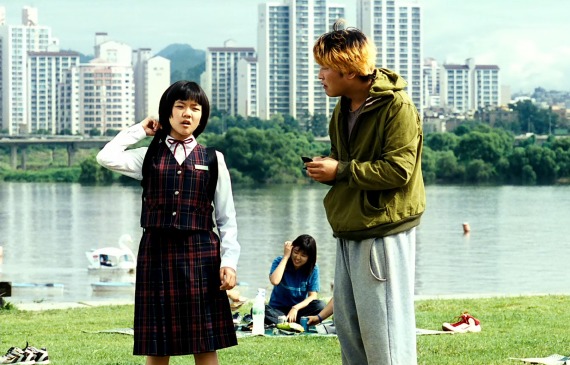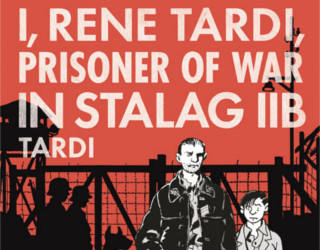
Like many people, we watched a bunch of genre movies—scary ones—in October, especially as it grew closer to Halloween. Various channels and streaming services (available to us through our co-op’s satellite service) were playing movies they deemed good for the season, including TCM (Turner Classic Movies), HBO, Cinemax, Starz, etc. Some were standard slasher movies, but TCM in particular was using the October weekends (hosted by Ben Mankiewicz and some particularly annoying guy whose name I’ve already forgotten) were devoted to some pretty good and classic films in high quality, including the original Frankenstein, Dracula, etc. So besides some of the films coming in on satellite, we decided to devote some of our October movie time to our favourite genre “horror” films (including horror/comedy), like the 2006 Korean movie from director (and co-writer) Bong Joon-ho: The Host.

When we first watched this, 15 years ago it didn’t make much of a mark on us; I just remember that we liked it. My wife, the Beautiful and Talented Lynne Taylor Fahnestalk, wonders if we saw an incomplete or variant version, and questioned our resident genre movie mavens, Richard Graeme Cameron (fellow Amazing Stories® Online columnist) and kaiju expert Stan Hyde, but they didn’t know of any variant versions. My theory is that at that time I probably downloaded a pirated version from Usenet (can’t do that anymore!), and it was badly chopped up. That is my theory, and what it is too, and which is mine.
Anyway, what we watched the other night was a terrific movie as far as genre goes, not only in acting, but in plot, SFX (CGI), and practically any other standard. The CGI was bound to be great, as it came from WETA and The Orphanage. But the political commentary, the bumbling, unheroic hero, the dysfunctional family and, above all, the actors to bring this film to life came from Korea and a non-U.S. point of view.

Since this movie is fifteen years old, I won’t shy from spoilers. If you haven’t seen it by now, well… sorry.
The movie begins in 2000 near Seoul, where a Korean lab assistant working for a US military doctor is ordered to throw a bunch of contaminated formaldehyde down the drain. He wants to refuse—even a lowly lab assistant knows you don’t just throw this stuff into the environment—but the American he works for says that the Han river is wide and hints that if he doesn’t do it he’ll lose his job. Next, we see that he’s emptying a hundred or more bottles, not all of which appear to have formaldehyde, as they’re steaming like acid as they’re poured. Some time later, we see a couple of guys in waders fishing in the Han, and one of them catches something odd in his coffee cup; they decide it’s some kind of creepy mutant. “How many tails does that thing have?” one asks; the other says “Makes your skin crawl,” as the little thing swims away (It wasn’t shown at that time, just hinted at). A bit later, a failed businessman seeking suicide is about to jump off a bridge when he notices “something dark” in the water. “I’ll see you in hell,” he tells the men trying to dissuade him from jumping, then leaps off the bridge. Again, I couldn’t see anything in the water. Maybe I just missed it.
Six years later, we are introduced, one by one, to the Park family (Figure 1), starting with Park Gang-du (Koreans put the family name first), played by Song Kang-ho; then the family father Park Hee-bong, played by Byun Hee-bong, who runs the family snack bar by the Han; then Gang-du’s daughter Park Hyun-seo, played by Go Ah-sung. Gang-du also has a brother, Park Nam-il (played by Park Hae-il), who is a university graduate and former political activist but now a jobless drunk; and a sister, Park Nam-ju (Bae Doona), who is a Bronze-medal national archer (who just missed a higher medal by dallying on her last shot, shown on national TV, until the timer ran out). Gang-du is clumsy, ineffectual, apparently not very bright, and a bad father, although he adores his daughter. He’s just too dumb to do much for her. (In Figure 3, she berates him for sending his drunk brother to Parents Day at school and for getting her a bad cellphone.) While he is delivering food to some customers, they all see something in the water, and prompted by Gang-du, who throws a can of beer, they all start throwing things. The monster comes out of the water and attacks the group. In the confusion of running away, Gang-du trips and grabs the wrong young girl’s hand, leaving Hyun-seo alone in the path of the monster. It grabs her in its prehensile tail and dives into the water. But before it grabs Hyun-seo, the beast, which is fully shown in broad daylight, unlike many “monster” movies, attacks and kills a number of people, as well as overturns the Parks’ snackbar. Gang-du and another man try to attack the monster with a sign pole, but he is splattered by blood and the other man is killed.

Later, while all the families are at a mass memorial for the dead (including Hyun-seo), the TV shows an American soldier who has apparently contracted a virus by being attacked by the monster. The Korean government, prompted by the American government, attempts to quarantine everyone at the memorial, especially Gang-du, because he has the monster’s blood on him. While he is in quarantine, Gang-du hears a scratchy, broken phone call from Hyun-seo’s crappy phone, and decides she’s alive and he’s going to rescue her. The family escapes from the quarantine, and goes on the run, pursued by everyone—their pictures are played on the TV.
A pre-teen homeless boy, Se-jin (Lee Jae-eun), and his younger brother Se-joo (Lee Dong-ho) break into the wrecked snackbar to get some food.
We find out that the monster has been caching food (the whole bodies of people it has taken) in a sewer under a bridge and, by playing dead, Hyun-seo has survived. And when the monster, which takes people into its mouth but saves them for later, disgorges Se-jin and Se-joo together, she discovers that Se-joo is still alive, and awakens him, taking him into her charge.
A word about the monster, which was designed, so it is said, to resemble Steve Buscemi in Fargo. It can run on land, swim in the river, but has a curious technique of somersaulting under a bridge (holding onto the bridge’s girders and other infrastructure) until it sees someone it wants, then it dives into the Han from under the bridge (It’s a very high bridge with lots of piers, and the sewer is near it.) Part CGI, part animatronic, it’s clearly shown, but hard to make out because it’s almost always in motion. Hyun-seo and Se-joo are eventually alone in that part of the sewer, which is sunken, and impossible for them to escape. The monster eventually learns they are alive because Hyun-seo has tried to make a rope from the dead people’s clothing, but she has to jump on the sleeping monster’s back, and it awakes and attempts to eat them. They escape being eaten by retreating into a pipe that’s too small for the monster to enter, but later the monster swallows them.
Gang-du and his family go to buy weapons from a friend of Nam-il (from his political protest days), but the friend sells them out for money, and Gang-du is taken prisoner and experimented on to find out where in his body the virus lies. Eventually, they even drill into his head to check the brain, but no virus is found. He escapes and joins the family hunting for Hyun-seo. The U.S. soldier, who was supposed to have a virus, dies—and it’s revealed that there was no virus, it was just something the U.S. government thought up because of the chemical burns from the formaldehyde.
The Korean government is acquiescing to anything the U.S. government wants to do, apparently. The U.S. government decides it’s going to hunt the monster and kill it with a chemical called “Agent Yellow” (shades of Agent Orange, eh?). While all that’s going on, the Park family is trying to hunt and kill the monster in order to find Hyun-seo; but Gang-du screws up again, and gives his father an empty gun—and the monster kills Hee-bong, the father. The sister, Nam-ju, takes her bow, is ineffective and is knocked out by the monster’s tail. Meanwhile, Gang-du finds the rope made of clothes and is almost caught by the monster… but he sees Hyun-seo’s arm hanging out of the monster’s mouth, and pursues it.

The U.S. Army has a device to release the Agent Yellow, which will supposedly kill anything within 20 km; and despite all the people by the riverbank, they release it. Nobody dies, but some protesters fall very ill—it seems that anyone exposed to it bleeds from the ears. The monster blunders in, and apparently sinks unconscious or dead. Gang-du reaches into its mouth and pulls on Hyun-seo’s arm, pulling both she and Se-joo (who she was holding in her arms) out of the dead monster—but it’s too late; she is dead, leaving Se-joo alive. The second hit of Agent yellow revives the monster; Gang-du’s brother Nam-il throws Molotov cocktails at it (he learned how from his protest days as well). A homeless guy on the bridge has brought a gas can. Nam-il drops his last Molotov cocktail, but Nam-ju sticks an arrow in the burning rag and finally takes a shot in time–the monster is doused with gasoline and begins burning; and Gang-du kills it, finally, with a signpost. Despite all the inadequacies of the family—the stupid, bumbling Gang-du, the alcoholic unemployed brother, the sister who can’t take a shot until it’s too late—they finally succeed in something, but it’s too late for Hyun-seo.
Much later, we see Gang-du without bleached hair, apparently running the snackbar with the aid of Se-joo—perhaps the ordeal, or even the drilling into his head, has brought him out of his permanent daze—and they are sharing a meal together. Gang-du has apparently adopted Se-joo and has finally become an adult and a worthwhile parent.
What I liked about this film is that it’s different from most monster movies. There was a fair amount of anti-American sentiment in this movie, although it was balanced a bit by anti-government-in-general sentiment. Instead of the hero being a buff, stalwart “let’s gird our loins and attack” kind of guy, he was a bit of a nothing, but when his daughter was threatened, he became determined. The monster was very explicit here; not hinted at, and we thought it was very well done. The ending, though tragic (and Western film seldom end with the death of a child), actually had a hopeful air to it; Gang-du seemed determined to be a better parent to Se-joo than he had been to his daughter. I liked this better than Bong Joon-ho’s previous film, Snowpiercer. For some reason, though it was well done, Snowpiercer rubbed me the wrong way. I just don’t think it was well thought-out.
Comments? You can comment here or on Facebook, or even by email (stevefah at hotmail dot com). All comments are welcome! (Just be polite, please.) My opinion is, as always, my own, and doesn’t necessarily reflect the views of Amazing Stories or its owner, editor, publisher or other columnists. See you next time!










